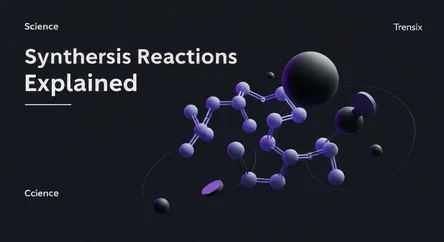Science
Synthesis Reactions Explained

Learn about synthesis reactions, where simple substances combine to form complex products, and their vital role in industry and daily life.
What is it?
A synthesis reaction, also known as a combination reaction, is a fundamental chemical process where two or more simple reactants combine to form a single, more complex product. The general formula for this type of reaction is A + B → AB. A classic example is the formation of water, where hydrogen gas (H₂) reacts with oxygen gas (O₂) to create liquid water (H₂O). Similarly, the formation of table salt (sodium chloride) occurs when sodium (Na) and chlorine (Cl₂) react. These reactions are one of the main classes of chemical reactions and are the opposite of decomposition reactions, where a complex molecule breaks down into simpler ones.
Why is it trending?
Synthesis reactions are perpetually relevant because they are the cornerstone of creation in chemistry. Their importance trends in industrial and scientific innovation, from pharmaceuticals to materials science. For example, the Haber-Bosch process, a synthesis reaction that produces ammonia, is crucial for manufacturing agricultural fertilizers that support global food production. Furthermore, ongoing research relies on synthesis to develop new medicines, advanced materials like polymers and graphene, and more efficient industrial catalysts. The constant drive for new products and sustainable technologies ensures that understanding and mastering synthesis reactions remains a key focus.
How does it affect people?
Synthesis reactions have a profound impact on daily life, as they are used to manufacture countless essential products. The medicines that treat diseases, the plastics used in electronics and packaging, and the fertilizers that help grow our food are all created through synthesis reactions. Even natural processes involve synthesis; for instance, the rusting of iron is a synthesis reaction between iron and oxygen. In our own bodies, the creation of complex molecules like proteins from simpler amino acids is a form of synthesis essential for growth and repair. These reactions are fundamental to both the industrial world and the natural environment.